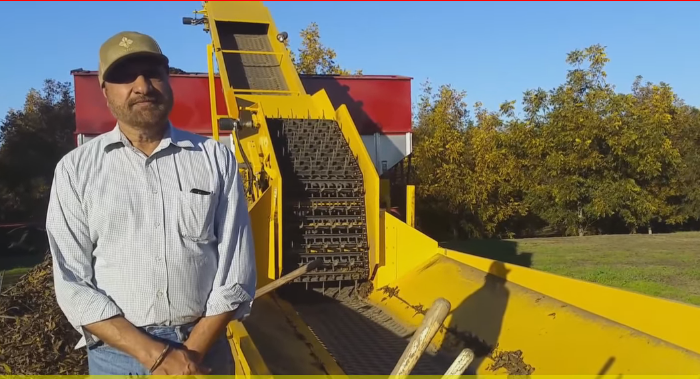Let me start off with warm wishes from CSP on this festive day, Bhogi. Bhogi marks the last day of the traditional Indian calendar month of Marghazhi or Dhanuh Masa that typically falls during the months of December and January. This day is celebrated across the nation particularly in Punjab, Haryana, Orissa, Andhra Pradesh, Tamil Nadu, Karnataka to welcome the fresh harvest of rice, sugarcane and turmeric. On this day, people tie sugarcane outside their homes, wear new clothes, build a bonfire, which is traditionally known as Bhogi Mantalu, where they throw old and discarded items, mostly clothes, praying for fresh new beginnings. The bonfire is built in the early hours of the morning and usually lasts through the night. Lord Indra is prayed to on this day to bring rains for a good harvest the following year. On Bhogi and the following days of Surya or Thai Pongal and Kaanum Pongal, people decorate their homes with yellow flowers, perform Puja to Lord Surya and cook various sweets and savouries.
As it is the harvest festival, farmers across the country celebrate the festival with utmost joy. They perform puja to their ploughs and other farm equipments. In Punjab, Bhogi is known as Lohri. People build bonfires in the midst of the field or in front of their homes, friends and family dance around the bonfire while throwing puffed rice into the fire believing that it will ward off evil spirits and poverty from their lives while bringing joy and prosperity. Makki ki roti (cornmeal flat bread/ chapati) with Sarson ka Saag (mustard gravy) is prepared. They sing the Lohri song while dancing around the bonfire. The song speaks of nature, and their hero Dulha Bhatti who used to rob rich people and helped the poor ones. He is also known to have saved young girls from being married by force.
The state of Punjab is known as the Breadbasket of India from as long as the Indus Valley Civilisation existed. Punjab means the land of the five rivers- Chenab, Ravi, Jhelum, Beas and Sutlej. The land that has been nourished by these waters has been ever fertile and cities like Harappa and Mohenjo-Daro flourished. The main crops that were grown in this area was wheat, barley and pulses and the granaries were always overflowing. Even to this day, Punjab produces 20% of the nation’s wheat and 11% of rice. India is known to have had around 6000 varieties of rice but over the centuries, we have lost many native varieties.
India is the 2nd largest cultivator of rice for many many civilisations. There is evidence from archaeological studies that rice has been cultivated in India as far back as 6500 BC in the Ganga valley. It is the staple grain for more than 50% of India’s population.
The farmers from Punjab have been regarded very highly across agricultural hubs of the world. Sikh farmers have made their mark in every part of the world with their fantastic skills and extremely hard-working nature. An article in The New York times praised Sikhs for saving the traditional Italian Cheese, Parmesan. Immigrants from Punjab, with their vast knowledge on dairy farming, who settled down in Italy 20 years ago are indispensable for farming in Italy. An article by the Sikh Global Village talks of two Sikhs who migrated to Argentina to become leading farm owners of Rosario de la Frontera.
Post-independence, Sikhs left the country in search of better employment opportunities. Many settled down in South-east Asia, Australia, Canada, USA, UK, and South America. They took with them the traditional farming practices. These traditional practices have been an integral part of food production in India for centuries. A review article by Sanoj Kumar Patel et al., speaks of how these traditional agricultural practices are the best approach to food security and a sustainable environment.
Traditional farming involves three main aspects- (i) cultivation via double cropping, mixed cropping, crop rotation and agro-forestry, (ii) biological method of pest management and, (iii) using locally available practices to protect crops. The authors of this article are of the view that these practices which play a very significant role in achieving overall sustainability and improvement in nutrition quality, are to be strengthened.
A quick look into our agricultural practices from the Indus valley civilisation shows not only how well the country flourished but also how newer techniques to improve crop production, animal husbandry, rain water harvesting has developed over centuries.
Sikhs have put this knowledge to use and have carved a niche for themselves in the world of agriculture. A Canadian Sikh farmer became the country’s biggest cranberry grower and is now the chairman of a marketing cooperative of cranberry farmers in the US and Canada. Yuba City, a county in California is the Mini Punjab in the USA. Sikhs with their farming skills migrated over a 100 years ago to this county and are now proud owners of hundreds of acres of land that produces peaches, prunes and walnuts. The peaches and prunes account for 95% of the total produce in the county.
Didar Singh Bains, a Sikh farmer who migrated to the US forty years ago is now the largest peach grower in California. According to him, he attributes his success to the secrets of farming that he learnt while working in the fields of Punjab.
It is safe to say that Sikhs are the best ambassadors of our traditional agricultural practices. On this auspicious day of Bhogi Pongal, we all pray that our farmers are blessed with a good harvest, prosperity and ample amount of rain until the next harvest. Happy Pongal!




